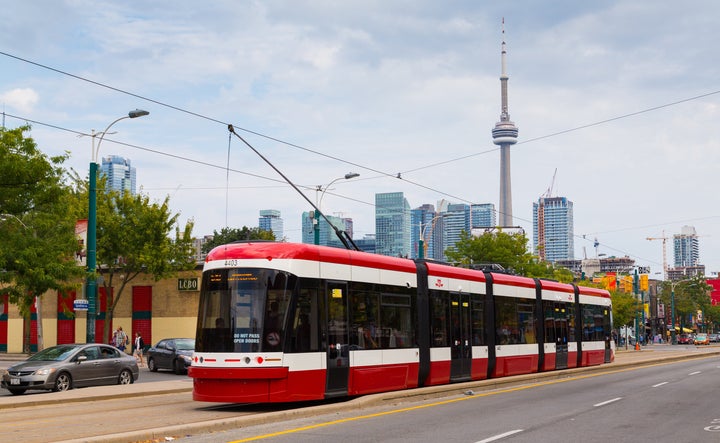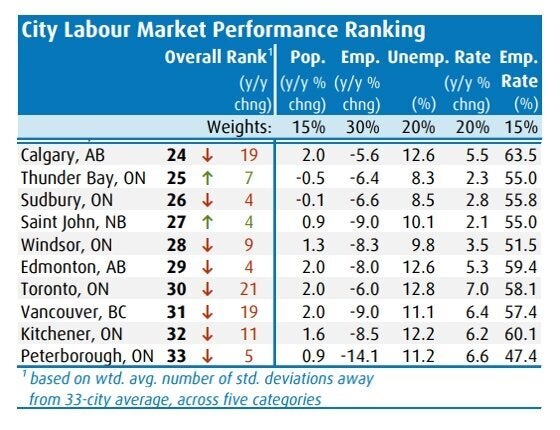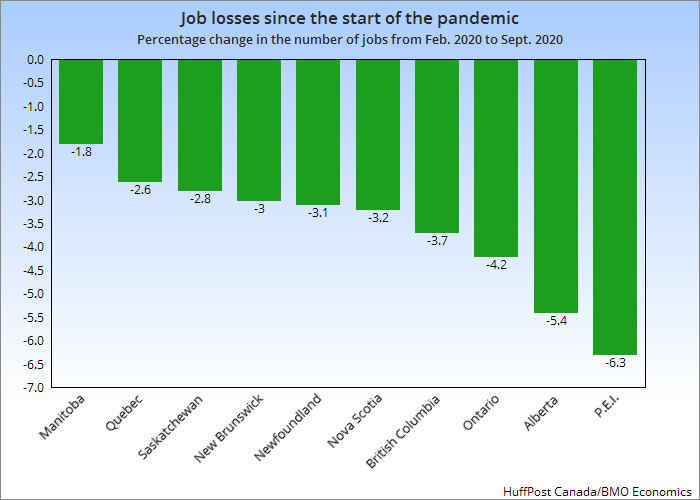
There’s no such thing these days as a “great place to find a job,” but if you need one fast in the pandemic, forget Toronto or Vancouver. You’d be better off in Manitoba or Saskatchewan.
The pandemic shutdowns have turned Canada’s job markets upside down, and the previous engines of job growth ― the big cities ― are sputtering while some previously sluggish smaller centres have come out looking surprisingly strong.
At 12.8 per cent, Toronto has the highest unemployment rate of any of the 33 metro areas tracked monthly by Statistics Canada, edging out Calgary and Edmonton at 12.6 per cent.
Watch: Spain sees highest youth unemployment rate in Europe as pandemic takes toll. Story continues below.
This prompted Toronto to plunge 21 spots on the latest Labour Market Report Card from BMO Economics, to 30th out of 33 cities.
Vancouver, with a jobless rate of 11.1 per cent, ranked one spot below at 31st, a decline of 19 spots. Montreal’s jobless rate is also well above the national average, at 10.7 per cent, and it ranked 21st in the BMO report.
Peterborough, Ont., claimed the unenviable title of worst job market.

The BMO ranking looks not only at the unemployment rate, but other factors such as the share of the population that has a job and how many jobs were created over the past year.
“There has been a shake-up at the city level, as larger centres have taken the brunt of the losses,” BMO economist Robert Kavcic wrote in a report titled “Big City Blues.”
Many of the industries that have seen the largest declines are particularly concentrated in the larger cities, such as hotels, restaurants, major league sports and air travel.
Southern Ontario’s smaller cities are reliant on trade with the U.S., which is down about 10 per cent compared to last year. And Alberta’s cities continue to struggle with the collapse of oil prices.
Kavcic noted that Manitoba is the winner provincially, having lost “just” 1.8 per cent of all its jobs, compared to 3.7 per cent for Canada as a whole.

At the top of BMO’s rankings are a bunch of unlikely heroes ― smaller cities in Quebec, the Maritimes and Prairies that haven’t been hit as hard by the lockdowns, and have held up better economically.
In what can only be described as an improbable turnaround, Trois-Rivières, Que., ranks as the best place for work in BMO’s report card.

Remarkably, a few of the cities at the top of the list actually appear to have more jobs today than they did a year ago. Employment in London, Ont., ranking eighth on the list, is 2.3 per cent higher than a year ago. Its housing market is soaring this fall, with the average house price up a stunning 28 per cent in the past year. Real-estate agents credit a wave of new residents coming in from Toronto.
But will all this last, or is this just a temporary blip during the pandemic? Not even the most confident experts are willing to take a bet on that yet.
“[W]e won’t dwell on the current rankings given major swings in the data (smaller cities can look wonky even in the most stable of times),” Kavcic wrote.
Still, you might want to widen your job search to include Winnipeg and Halifax these days. You never know.